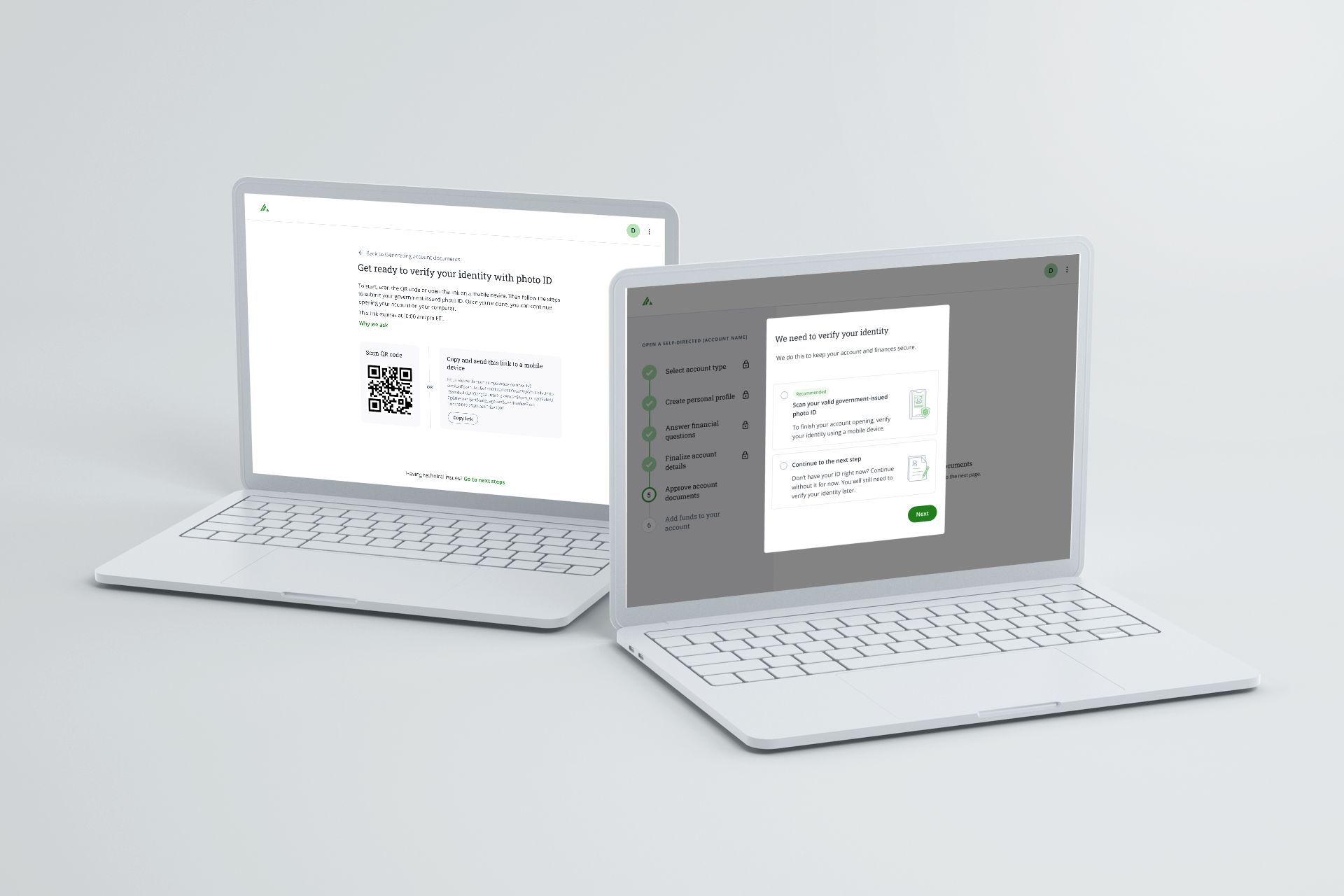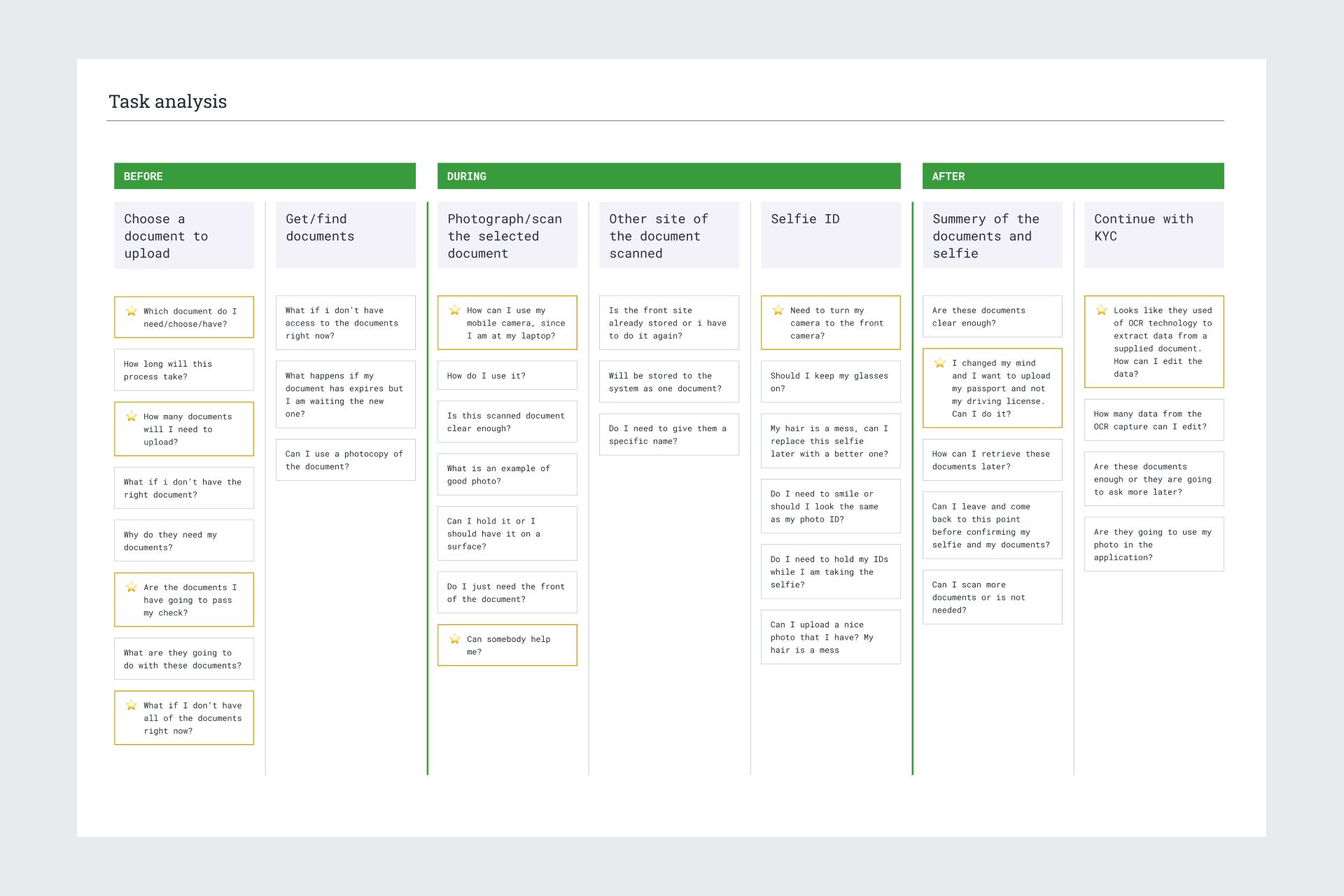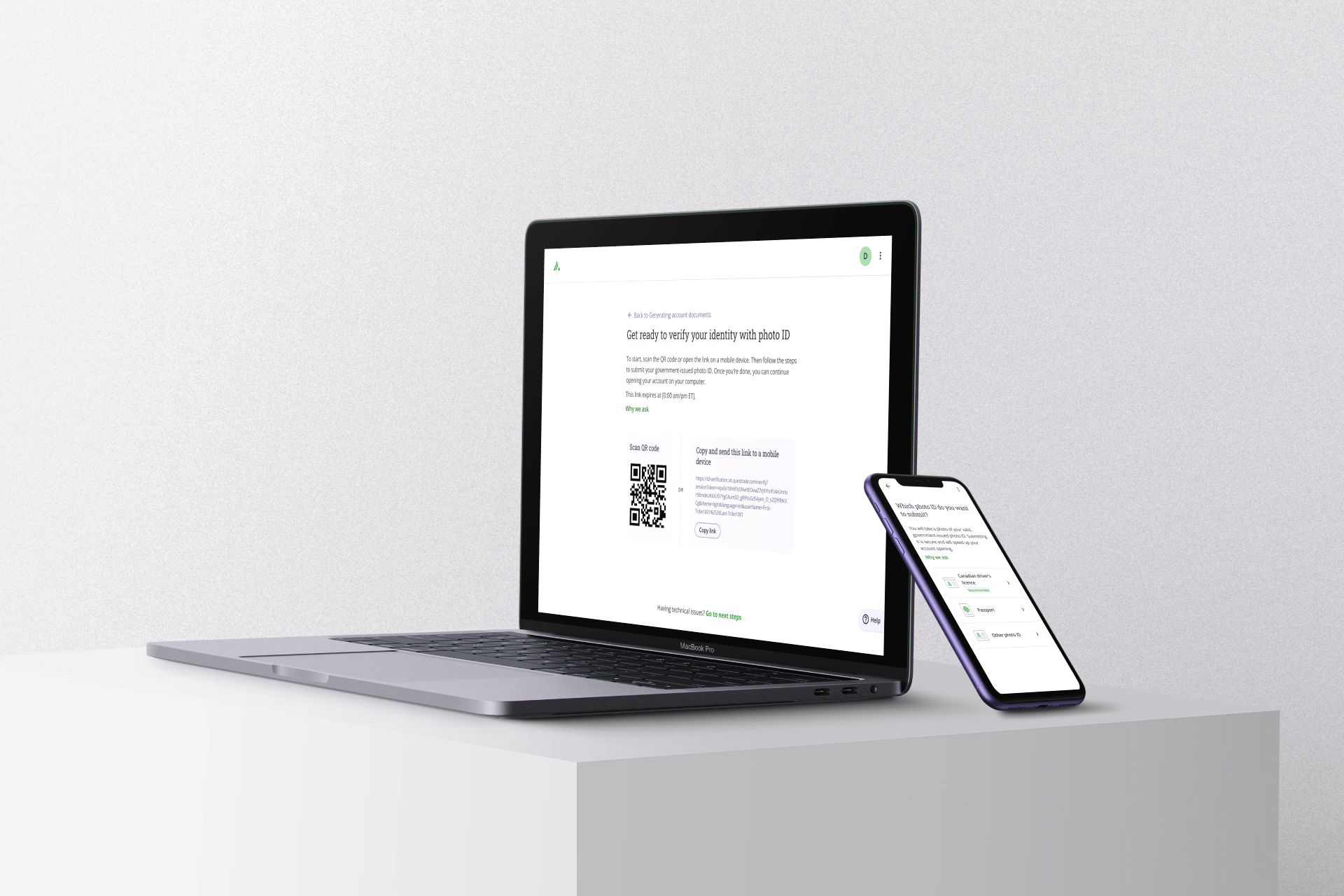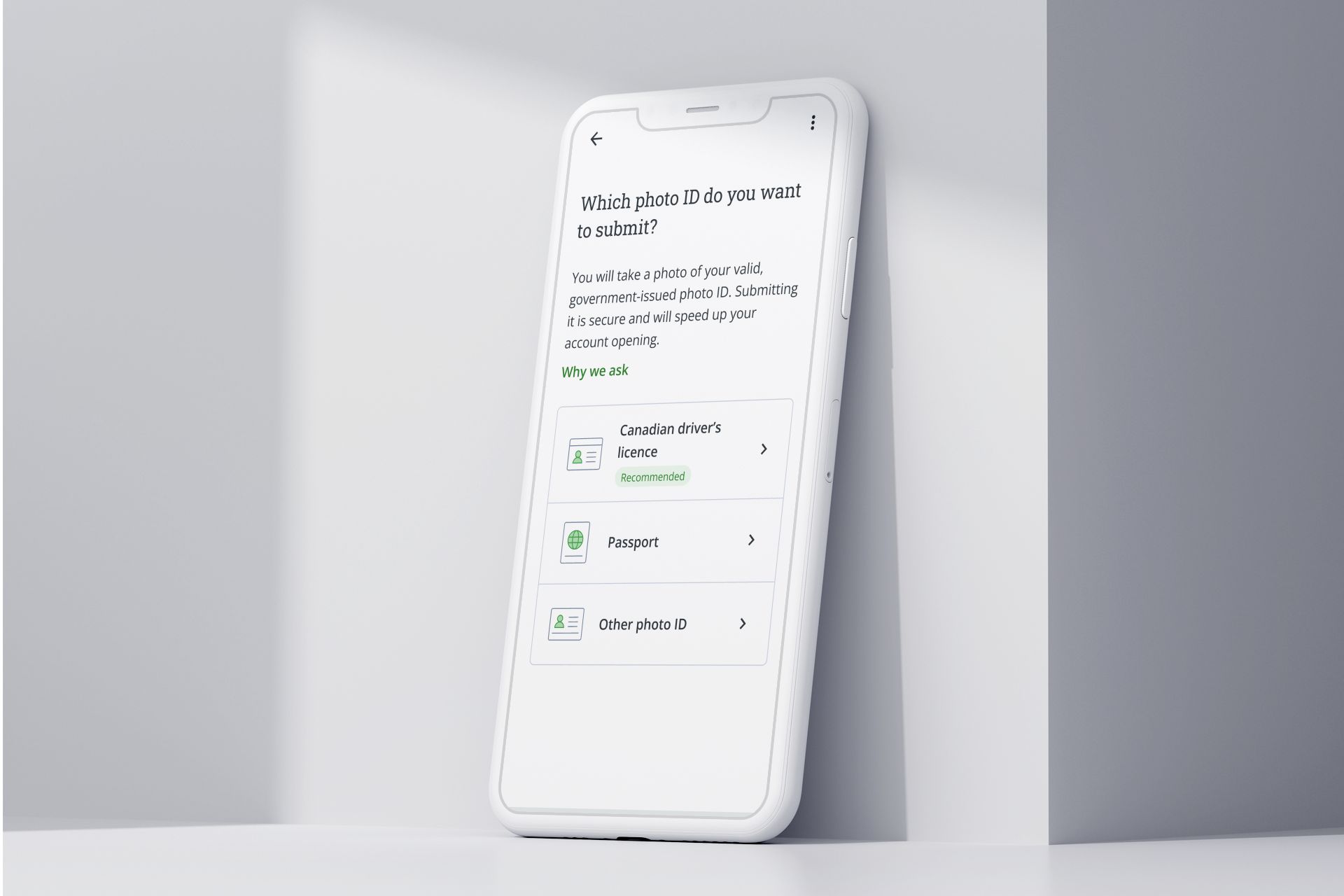ID Verification & Biometrics

Company
Questrade Financial Group
Service
Web & Mobile app design
Industry
Financial
Role
Lead User Experience Designer
Duration
2 months
Team
1 designer, 1 content, 1 PM, 2 agile teams
Year
2025
Completion time
1 min, 41 sec
(from 2 business days)
Conversion rate
95.19%
Manual review
- 52%
Auto-approval rate
+ 12.5%


Empowering users to start investing, securely and confidently.
I designed the ID Verification experience for a digital investment platform — an essential step in the account activation process. Without passing this step, users couldn’t start their investment journey. This case study explores how we simplified a compliance-heavy process to reduce friction, activate the investing account as fast as possible, build trust, and leverage machine learning for smarter document validation.

The challenge
New users were dropping off during the ID verification step—a mandatory process for regulatory compliance. Our data showed a 59% failure rate in automatic activation, which delayed users from starting their trading and investing journey. Many users entered incorrect KYC information, leading to further verification failures. This critical flow needed to securely collect sensitive information, guide users through document and biometric capture, and establish trust—while ensuring full compliance.
Problem Statement: How might we reduce drop-off and increase auto-activation during the ID Verification process while ensuring regulatory compliance and a secure, trustworthy experience?

Task analysis
To understand user needs and pain points, we broke down the ID verification process into discrete tasks:
01.
Before verification
- Choose a document type to upload (e.g., passport, driver’s license).
- Locate and prepare the required documents.
02.
During verification
- Use the mobile camera to photograph or scan the selected document.
- Capture the reverse side of the document if required.
- Perform a selfie ID scan to complete biometric verification.
03.
After verification
- Review a summary of the uploaded documents and selfie.
- Validate the information by comparing it with the KYC details provided by the user.

Key features designed
Designed key product features through a data-informed process that combined task analysis and vendor interviews. By mapping user workflows and identifying friction points, I uncovered critical opportunities to streamline operations and improve efficiency. Insights from vendor interviews validated real-world needs and technical constraints, ensuring that each feature was both user-centered and operationally feasible. This approach aligned design decisions with stakeholder goals while delivering measurable impact on usability and performance.
Mobile camera interface
- Clear visual guidance for aligning ID and face within the frame.
- Real-time feedback on scan quality.
QR Code and magic link
- Easy-to-scan QR code displayed on the desktop.
- Instant redirection to the mobile verification interface.
Synchronization
- Real-time progress updates on the desktop view.
- Notifications for successful steps or errors requiring attention.
Accessibility features
- Multilingual support for instructions.
- Alternatives for users without access to mobile cameras (e.g., manual upload).


